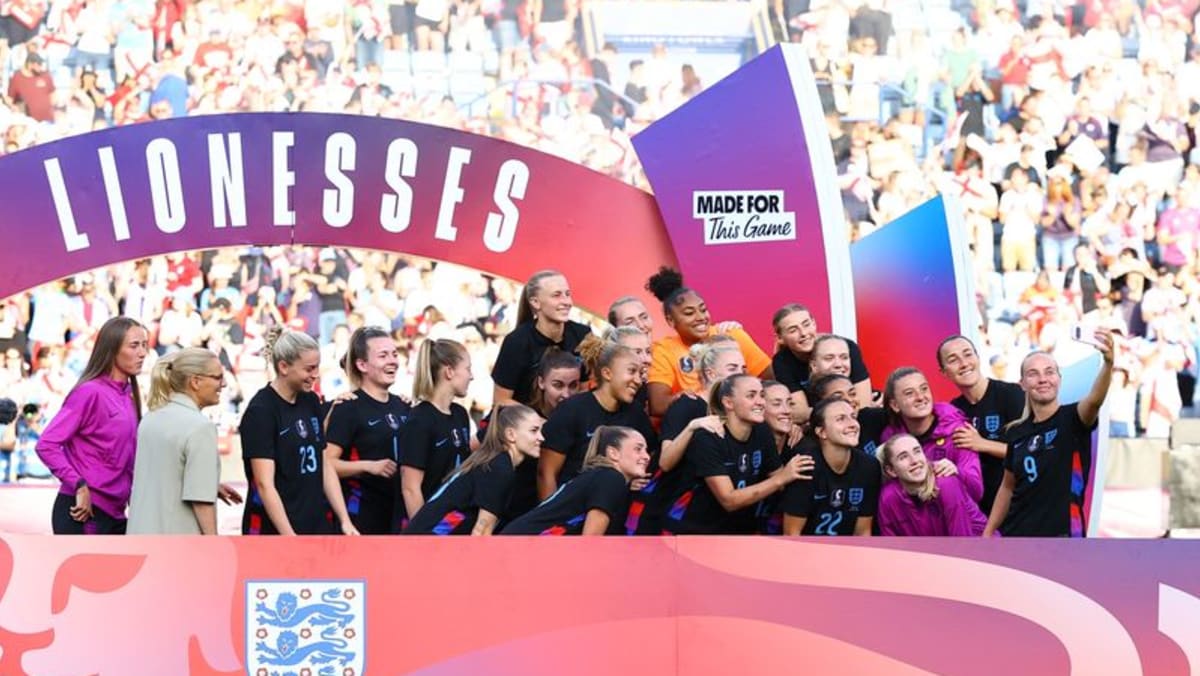MANCHESTER, England :The dreaded torn anterior cruciate ligament (ACL) regularly makes headlines in women’s football, but experts say there are prevention programmes that can cut the incidence rates in half or better.
Anybody who has been to an elite-level match will have spotted the traditional “hip out” football warmup drill, where a player lifts a knee and rotates their hip outward while walking.
Implementing that drill and others like it into training and match warmups can drastically reduce ACL injuries, according to programmes such as FIFA’s 11+ and the Swedish Knee Control Programme (KCP).
This is significant for girls and women in particular, considering they are up to eight times more likely to tear their ACL – and the younger players start, the better.
“It’s pretty clear that these programmes have the capacity to reduce the incidence of all lower-limb injuries, but ACL injuries specifically,” said Carly McKay, Director of Research at Podium Analytics and Reader at the University of Bath.
“But it depends on the dose. If you do it two or three times per week, and you have to keep doing it for the duration of a season, some studies have reported up to a 70 per cent reduction. So they work really well. The problem is you have to keep doing them.”
FIFA’s 11+ and the KCP are neuromuscular training programmes, with a series of exercises that take about 15 minutes to complete. FIFA also has a children’s version for players under 14.
Research around the cause of ACL tears is ongoing, although the general consensus is it is multi-faceted.
Everything from the quality of pitches and access to physiotherapy to hormonal fluctuations during the menstrual cycle and properly-fitting boots and sports bras are part of the conversation.
“The risk factors are so complex, because it’s not just about physical training,” McKay said.
“It’s about your psychological wellbeing on the day. It’s about how much stress you’ve been under over a period of time. It has to do with the weather conditions, the pitch conditions, decision-making by an opponent – all of those multi-factorial risks are going to affect everyone differently.”
Incorporating ACL prevention exercises into training requires time and space and a certain amount of basic understanding of what the exercises are, how to do them safely and correctly, McKay said, outlining the challenges facing coaches.
EXACERBATE RISKS
Part of the problem at the grassroots level is that coaches are often parents. With the football participation rates among girls on the rise, ACL injuries are not about to disappear.
Martin Hagglund, a professor of physiotherapy at Linkoping University in Sweden and researcher in injury prevention, said poor training at younger ages can exacerbate risks later at the elite level.
“If you have proper coaching, if you have proper non-football-specific training in terms of weight training and neuromuscular training, if you do all of this from a young age, I think the level of risk will be more comparable between boys and girls and men and women,” Hagglund said.
Despite technological advances around ACL injuries, Hagglund said there was “no magic bullet to predict ACL injury”.
There are tools being used in research settings that measure joint angles and force while running, planting and cutting, but those are not commercially available, nor used on a wide scale, McKay said.
“There is a movement around the potential for wearables to help us understand what’s happening at the moment of injury a lot better than we do,” she said.
“Will it ever be able to predict an injury before it happens? I personally am not so certain about that. I think we are a long way from that.”
Professional and national teams do use GPS tracking technology that can play a role in injury prevention by monitoring player workload.
There have also been advances in football boots. For decades, female players wore boots designed for men, just in smaller sizes, but manufacturers such as Nike, Adidas and Puma now have female-specific boots.
